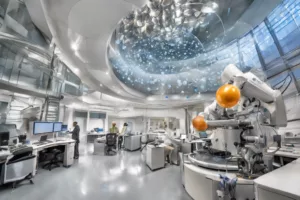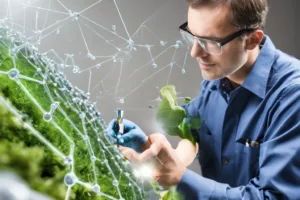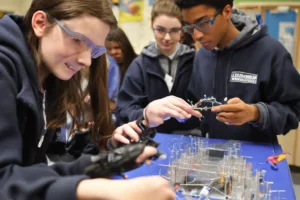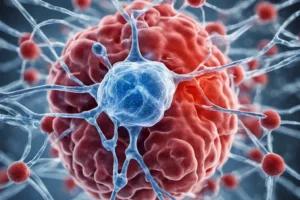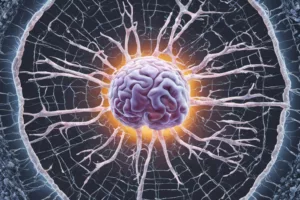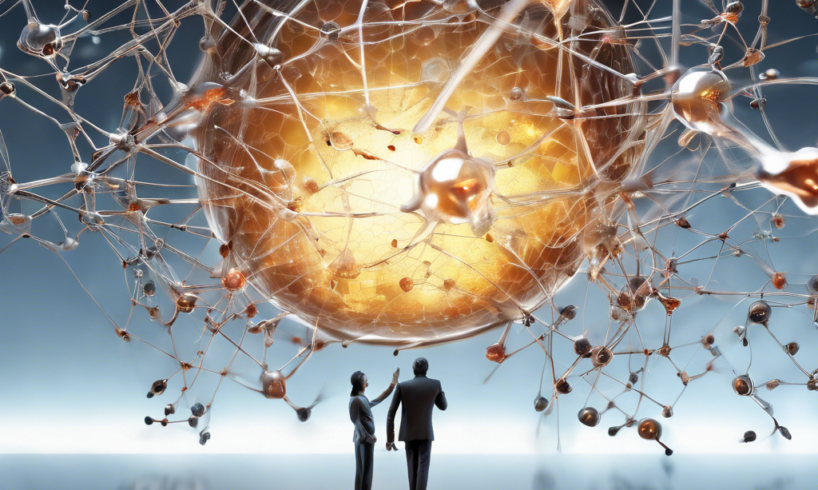
In recent years, nanotechnology has emerged as a groundbreaking field with the potential to revolutionize numerous aspects of our daily lives. From healthcare and consumer electronics to environmental sustainability, manipulating materials at an atomic or molecular scale is paving the way for innovative solutions that were once considered science fiction. This article delves into the ubiquitous impact of nanotechnology, exploring its current applications and prospects.
Understanding Nanotechnology: A Brief Overview
Nanotechnology refers to manipulating and controlling matter at an atomic or molecular scale, typically below 100 nanometers. To put it into perspective, a nanometer is one-billionth of a meter, about 100,000 times smaller than the width of a human hair. This field intersects various scientific disciplines, including physics, chemistry, biology, and engineering, and aims to exploit materials' unique properties at such a minuscule scale.
At this level, materials can demonstrate remarkable characteristics such as increased strength, lighter weight, enhanced chemical reactivity, and improved electrical conductivity. These unique properties enable innovative applications across multiple industries. For instance, nanoparticles can be used in medicine for targeted drug delivery systems that improve the efficacy and reduce the side effects of treatments. Nanoscale transistors are pivotal in creating faster and more efficient electronic devices.
The development of nanotechnology involves sophisticated techniques like electron beam lithography and atomic layer deposition to construct and manipulate nanomaterials with precision. As research progresses, the potential for nanotechnology to revolutionize various aspects of our daily lives continues to expand, making it a cornerstone of modern scientific advancement.
Healthcare Revolution: Nanotech in Medicine
Nanotechnology is revolutionizing healthcare by enabling breakthroughs that were once considered science fiction. One of the most promising applications is in targeted drug delivery. Nanoscale carriers can deliver drugs directly to diseased cells, reducing side effects and improving treatment efficacy. This precision medicine approach is particularly beneficial in cancer treatment, where traditional chemotherapy can harm healthy tissues.
Another significant advancement is in diagnostic techniques. Nanoparticles can be designed to bind to specific biomolecules, making them excellent contrast agents for imaging technologies like MRI and CT scans. This allows for earlier and more accurate detection of diseases, including cancers and cardiovascular conditions.
Nanotechnology is also making strides in regenerative medicine. Nanoscale scaffolds can grow tissues and organs, potentially addressing the critical shortage of donor organs. Additionally, nanomaterials are being developed for wound healing, offering faster recovery times and reduced scarring.
Finally, wearable nanotechnology is emerging as a tool for continuous health monitoring. Devices embedded with nanosensors can track vital signs and biochemical markers in real-time, providing valuable data for patients and healthcare providers. These innovations are enhancing medical treatments and fundamentally transforming how we approach healthcare.
Consumer Electronics: Enhancing Everyday Gadgets
Nanotechnology has revolutionized the consumer electronics industry, bringing about enhancements that significantly improve everyday gadgets' functionality, durability, and efficiency. One of the most prominent applications is in the development of smaller, faster, and more powerful semiconductors. By manipulating materials at the nanoscale, manufacturers can produce microprocessors with millions of transistors packed into a tiny chip, thus boosting the performance of computers, smartphones, and other electronic devices.
In addition to improving processing power, nanotechnology has made significant strides in battery technology. Nanomaterials create batteries with higher energy densities and faster charging times. For instance, lithium-ion batteries enhanced with silicon nanowires or graphene can store more energy and recharge faster than traditional batteries, leading to longer-lasting and more efficient portable devices.
Moreover, nanotechnology plays a crucial role in developing advanced display screens. Quantum dots, nanoscale semiconductor particles, are used in modern televisions and monitors to produce more vibrant colors and sharper images while consuming less power. This innovation not only enhances visual experiences but also contributes to energy efficiency.
Overall, the integration of nanotechnology in consumer electronics is transforming how we interact with our devices, making them more powerful, efficient, and user-friendly than ever before.
Environmental Applications: Cleaner and Greener Solutions
Nanotechnology has emerged as a powerful tool in the pursuit of environmental sustainability. One of the most promising applications is in water purification. Nanomaterials, such as carbon nanotubes and graphene, are being developed to create highly efficient filtration systems that can remove contaminants from water sources, including heavy metals and pathogens. These advanced filters not only enhance water quality but also have the potential to provide clean drinking water to underserved regions.
In addition to water purification, nanotechnology plays a crucial role in air pollution control. Nanoscale catalysts are used in catalytic converters to reduce harmful emissions from vehicles and industrial processes. These catalysts enhance the breakdown of pollutants like nitrogen oxides and carbon monoxide into less harmful substances, improving air quality and reducing health risks associated with air pollution.
Furthermore, nanotechnology is contributing to the development of sustainable energy solutions. Nanomaterials are being utilized in solar cells to improve efficiency and reduce costs, making renewable energy more accessible. Additionally, nanotechnology is aiding in creating more efficient batteries and energy storage systems, which is essential for the broader adoption of renewable energy sources.
Overall, nanotechnology's environmental applications pave the way for cleaner and greener solutions, addressing some of our most pressing environmental challenges.
Future Prospects: What's Next for Nanotechnology in Daily Life
As we look to the future, nanotechnology is poised to revolutionize our daily lives in myriad ways. One of the most promising prospects lies in personalized medicine. Nanotech could enable the development of highly targeted drug delivery systems that release medication precisely where it’s needed, minimizing side effects and enhancing treatment efficacy. Additionally, advancements in nanomaterials could lead to more efficient energy storage systems, such as next-generation batteries that charge faster and last longer.
Nanotechnology may pave the way for even smaller, more powerful devices in consumer electronics. Flexible and wearable electronics powered by nanoscale components could become ubiquitous, integrating seamlessly into our clothing and accessories. This would enhance convenience and enable continuous health monitoring and real-time data collection.
Environmental sustainability is another area where future nanotech applications hold great promise. Innovations in water purification and air filtration systems using nanomaterials could provide cleaner resources and reduce pollution. Moreover, developing nanotechnology-based agricultural solutions could improve crop yields and food security while minimizing the environmental footprint.
As research and development continue to advance, the prospects for nanotechnology in daily life are vast and transformative. They promise a smarter, healthier, and more sustainable world.
As nanotechnology continues to advance, its influence on our daily lives is set to grow even more profound. The potential for personalized medicine, enhanced consumer electronics, and sustainable environmental solutions highlights a fraction of what this revolutionary field can achieve. By harnessing the unique properties of materials at the nanoscale, we are not only improving existing technologies but also laying the foundation for a smarter, healthier, and more sustainable future. The journey of nanotechnology is just beginning, and its possibilities are as vast as they are transformative.

George Smith, with over a decade in tech journalism, excels in breaking down emerging tech trends. His work, spanning tech blogs and print, combines in-depth analysis with clarity, appealing to a wide readership. George's pieces often explore technology's societal impact, showcasing his foresight in industry trends.



